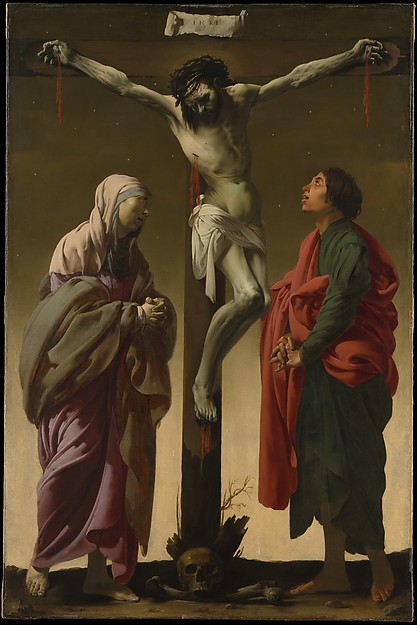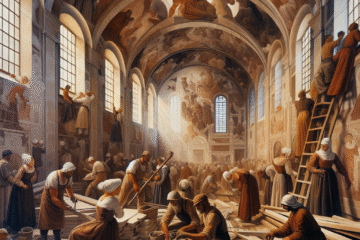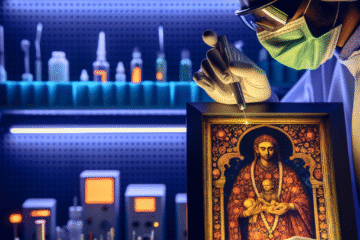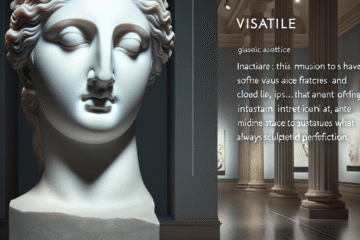
Image title: The Crucifixion with the Virgin and Saint John
Medium: Oil on canvas
Date: ca. 1624–25
Source:
The Met Collection
“
I am not bothered by the fact that I am unknown. I am bothered when I do not know others.
”
— Confucius
The Unknown Muses: Forgotten Women Who Funded the Renaissance
Introduction: Invisible Architects of a Cultural Revolution
When we think of the Renaissance, names like Leonardo da Vinci, Michelangelo, and Raphael come to mind—towering figures of artistic brilliance. Yet behind many masterpieces lies another, lesser-known force: the female patrons who financed, guided, and quietly shaped this golden age of Western art. Often erased from mainstream narratives, these women—noble, educated, and determined—were pivotal in transforming the cultural landscape of 15th and 16th century Italy. From Florence to Ferrara, their patronage created the very conditions in which art, science, and humanism flourished. This article uncovers the forgotten heroines whose influence reverberated through history.
1. Florence: The Rise of Women Patrons in the Cradle of the Renaissance
Florence is often hailed as the epicenter of the Renaissance, and while the Medici family’s role is well documented, many overlook the contributions made by female members of powerful Florentine families. Lucrezia Tornabuoni, mother of Lorenzo de’ Medici, was not only a poet and political strategist but also a dedicated art patron. She financed sacred art commissions and supported emerging writers and thinkers. Her involvement wasn’t limited to commissioning artwork; she engaged in theological discussions and influenced artistic themes. In a period where wealth equated power, her investments in visual culture helped Florence become a vibrant nexus of humanist art and thought.
2. Ferrara: The Este Duchesses and the Courtly Splendor
North of Florence, the court of Ferrara under the Este family became another vital hub of Renaissance art, bolstered significantly by its female nobility. Eleonora d’Aragona, wife of Duke Ercole I d’Este, brought with her from Naples a refined taste and an extensive network of artists and musicians. Her daughter, Isabella d’Este, cultivated what became one of the most legendary art collections of the Renaissance. Though often superficially celebrated as a style icon, Isabella was deeply intellectual, negotiating with artists like Mantegna, Perugino, and Leonardo himself. The works created under her patronage, from opulent studiolos to allegorical portraits, fused Neoplatonic ideals with opulent courtly aesthetics.
3. Venice and Rome: Spiritual Power and Artistic Vision
In regions influenced by the Church, women of the aristocracy channeled their power through religious patronage. Vittoria Colonna, a noblewoman and poet closely associated with Michelangelo, exerted a profound spiritual and artistic influence in Rome. She became the muse and confidante of Michelangelo, inspiring deeply introspective religious works like his drawings of the Pietà. In Venice, noblewomen such as Caterina Cornaro, Queen of Cyprus and later a political figure in Venice, used their positions to promote portraits and religious works that celebrated both personal piety and public power. These women subtly dictated iconography, blending the sacred and secular in innovative ways that echoed the philosophical questions of the age.
4. The Impact of Humanism and Print Technology
The Renaissance was more than art—it was a philosophical shift that placed humans at the center of the universe. Female patrons embraced this humanism and used it to legitimize their participation in intellectual and artistic life. The spread of print technology helped popularize these ideals and the reputations of educated noblewomen who were commissioning works. Libraries founded or sustained by women, such as the library of Isotta Nogarola in Verona, became centers of literary and philosophical exchange. This intellectual empowerment often found visual expression in commissioned portraits and allegorical paintings that depicted women as learned and virtuous figures, challenging traditional gender roles in subtle but lasting ways.
5. Legacy and Erasure: Why Their Stories Matter
Despite their enormous contributions, these women were often airbrushed from history. Their patronage was folded into the achievements of their families or husbands, and their names omitted from museum plaques and art history textbooks. Yet acknowledging their role reconfigures how we understand cultural history. These women did not merely fund art—they shaped intellectual currents, supported groundbreaking aesthetics, and expanded the social possibilities of art itself. As scholars continue to excavate their stories, we are reminded that the Renaissance was not solely a male-driven movement, but a collaborative reawakening of humanity—and many of its torchbearers were women.
Conclusion: Rekindling the Light of the Forgotten
Revisiting the forgotten women patrons of the Renaissance isn’t just about adding names to the annals of art history—it’s about recognizing the structures of memory and omission that have shaped our collective understanding of the past. These unheralded muses serve as powerful reminders of art’s collaborative nature and the silent yet indispensable hands that shape its future. Through them, we are invited to reimagine the Renaissance not as a monolithic, male-dominated epoch but as a multifaceted era enriched by feminine vision and influence.

Image description:
Avignon – Montée des Canons – Cathédrale Notre-Dame des Doms d’Avignon 1150 – Renaissance Entrance under the Bell Tower (1425) – Renaissance Frescos – Statue of Martha, Patron Saint of Avignon
License:
CC BY-SA 4.0
Source:
Wikimedia Commons


